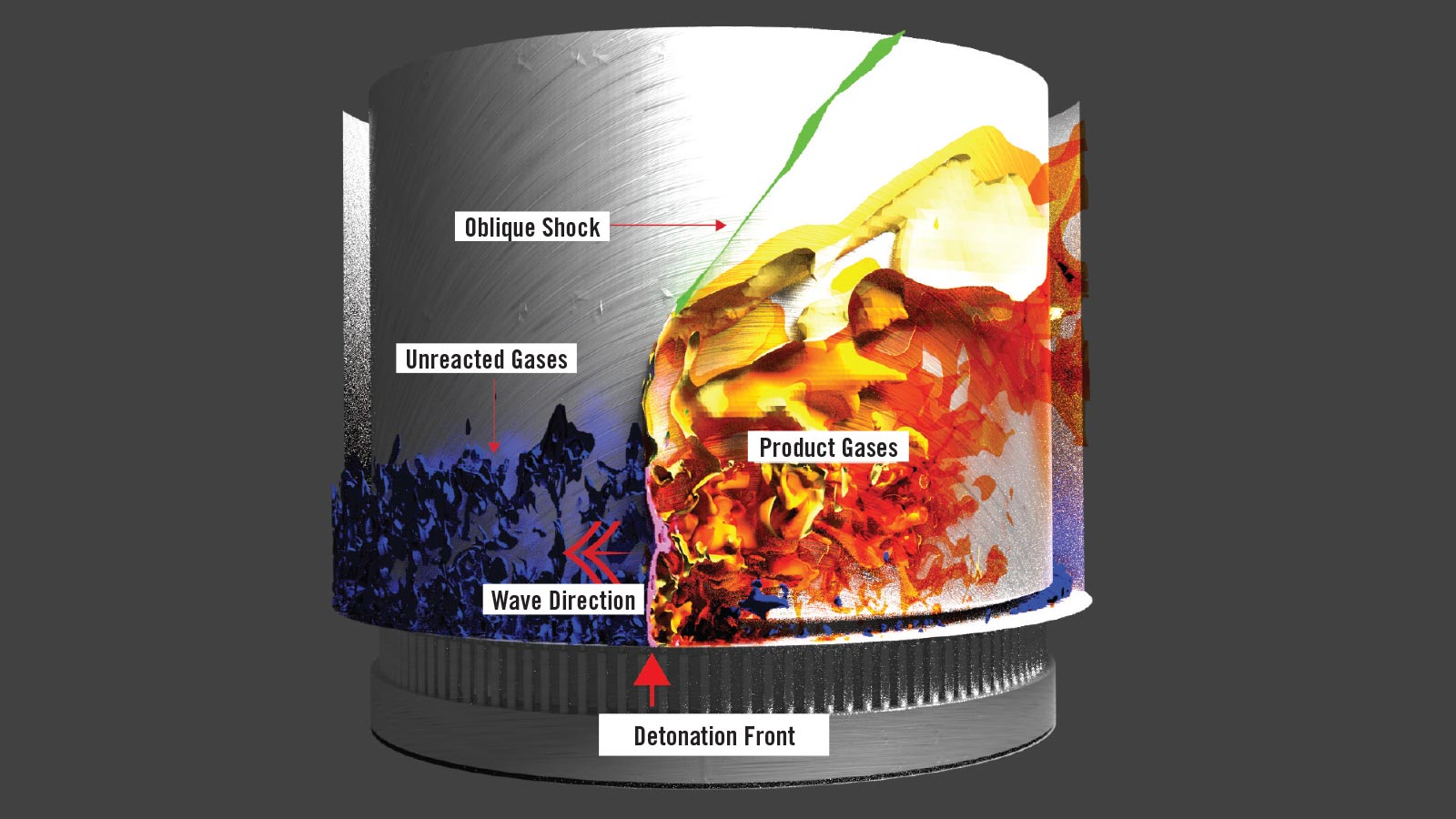Stay Up to Date
Submit your email address to receive the latest industry and Aerospace America news.
The Pressure Gain Combustion Technical Committee advances the investigation, development and application of pressure-gain technologies for improving propulsion and power generation systems and achieving new mission capabilities.
Funding for pressure gain combustion research this year fueled a robust growth in effort.
In the U.S., the Department of Energy, Air Force Office of Scientific Research and Office of Naval Research provided a majority of the funding. With these funds, the University of Cincinnati conducted a series of tests to explore the multimodal operations of annular and “hollow” rotating detonation engines, RDEs, demonstrating wave speeds greater than 95 percent of the theoretical value and oxide of nitrogen emissions as low as 50 parts per million. At the University of Texas-Arlington, a rig was completed in January to study the impact of swirl and torque in a conventional, annular RDE. The Air Force Research Laboratory, AFRL, and the University of Central Florida independently applied laser absorption spectroscopy to resolve product species, temperature and flow velocity in RDEs, providing previously unavailable detail to the modeling and design communities. Simulations at NASA’s Glenn Research Center in Ohio demonstrated increased pressure gain in an Ejector Enhanced Resonant Pulse Combustor concept.
Researchers at the University of Michigan completed a series of tests in April and May using an optically accessible RDE to study the dynamic coupling between reactant injection and detonation resulting in detailed simulations. In a separate activity, the University of Michigan along with University of Central Florida, Purdue University, University of Alabama and Southwest Research Institute collaborated on a Department of Energy funded RDE program with Aerojet Rocketdyne. Four test campaigns were undertaken from February through June to understand the effect of injector design and downstream diffuser configurations on the RDE operation and flowfield, as well as the mapping of the unsteady exit flow using high-speed particle image velocimetry.
Results from an RDC-turbine integration study at the AFRL conducted in January through February suggested minimal performance impact from exhaust flow unsteadiness. Similarly, the Purdue Experimental Turbine Aerothermal Lab presented results in June at the American Society of Mechanical Engineers\International Gas Turbine Institute Turbo Expo on computational studies of new classes of optimized subsonic and supersonic turbines that could tolerate unsteady flow. And in separate programs at Purdue University and AFRL-Edwards, the Air Force Office of Scientific Research provided support for RDE-rocket studies that achieved sustained detonation using hydrogen peroxide/triglyme liquid/liquid propellants.
At Technische Universität Berlin in Germany, with funding from the Federal Ministry of Economic Affairs and Energy, researchers considered stabilization mechanisms of single and counter-rotating modes on RDE performance. And in a joint effort among Safran, MBDA Inc. and Institute Pprime in France, researchers focused on the development of a sustained (no reignition) constant volume combustion cycle as well as characterizing detonation in non-uniform fuel-air mixtures. In Russia, Semenov Institute of Chemical Physics experimentally demonstrated continuous-detonation of a n-pentane film in an annular combustor for a rocket application. And at the Institute of Aviation in Poland with funding from the U.S. Air Force, researchers explored the use of gasoline and jet-fuel for air-breathing applications of RDC with a gas turbine.
Yokohama National University, Kyushu Institute of Technology, Sophia University, Saitama University and Tokai University in Japan established a joint collaboration to study an RDE-based gas turbine engine for stationary power generation. Nagoya University, Keio University, Institute of Space and Astronautical Science of Japan Aerospace Exploration Agency, and Muroran Institute of Technology performed system level RDE ground combustion tests in preparation for an upcoming sounding rocket space flight test.
Image: Experimental and computational research at the University of Michigan has explored dynamic coupling between reactant injection and detonation utilizing an optically accessible rotating detonation engine resulting in detailed simulations. Credit: University of Michigan
Stay Up to Date
Submit your email address to receive the latest industry and Aerospace America news.




